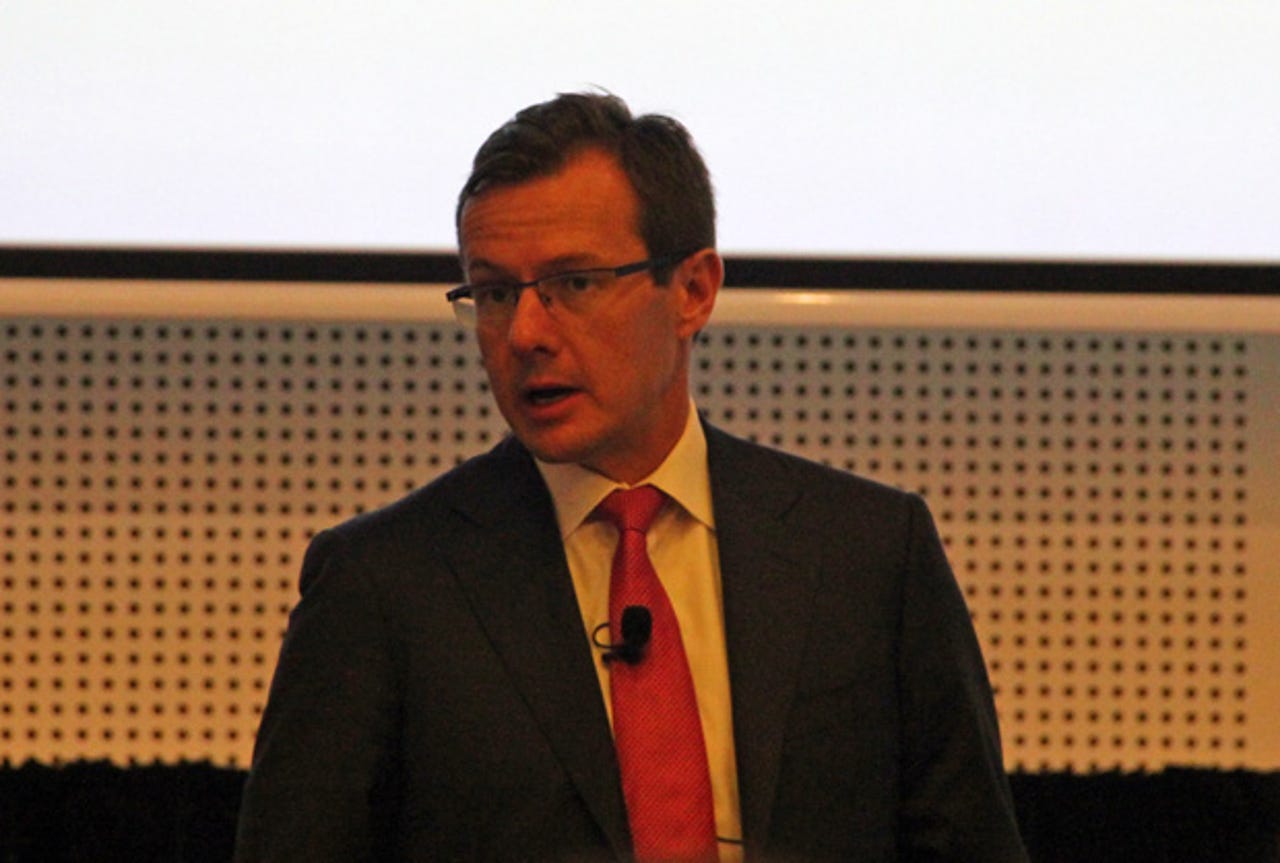Government ideal for hybrid cloud: Cisco

Government agencies looking to get into cloud services should look at hybrid cloud models, according to Cisco's vice president of Australia and New Zealand Ken Boal.
Last year, the Australian government began pushing government agencies to adopt a cloud-first approach to services. In October, the government revealed that although the Australian government spends AU$6 billion on IT annually, a mere AU$4.7 million has been spent on cloud services by the government since July 2010.
Under the new cloud policy, agencies now "must adopt cloud where it is fit for purpose, provides adequate protection of data, and delivers value for money".
Communications Minister Malcolm Turnbull has urged government agencies to move away from the "box-hugging mentality" that resists adopting cloud services.
"There has been much more resistance to cloud in government than anywhere else," he said in November.
"That box-hugging resistance to anything that was going to challenge the roles of ICT professionals in agencies, it is a very defensive question of protecting turf."
Some agencies are beginning to take on the challenge, with ZDNet first reporting in January that the Australian Department of Defence was looking to conduct a limited trial of Google Apps within the Australian Defence College.
This month, Defence will begin a 24-month limited trial across 450 users in the college.
In the government's official cloud policy, agencies are asked to evaluate which sort of cloud -- public, private, or hybrid, which is the mixture of public and private clouds -- would be best for the agency's information requirements.
Speaking on the sidelines at Cisco Live in Melbourne in March, Boal told ZDNet that he believes the government offers the best use case for hybrid cloud, because agencies have functions that need the security of private clouds, but also the flexibility of public clouds.
"Not all workloads should go into public cloud. Many of those workloads should be in government-controlled datacentres, and there needs to be more focus on the economics, and the opportunities for the government to build hybrid cloud platforms," he said.
The push to save money in the public service would force reluctant CIOs in those agencies to look at their options and take more risk with cloud services, he said.
"I think the public service financial crunch means that they don't have an option. They've got to look at what is the best combination of economic and security implications for their particular use cases," he said.
"And they need to look very hard at the cost of options for going to the cloud, or the cost of building an internal cloud and building this hybrid model."
He said the governments should look to the banks to see how they have developed hybrid clouds, and government procurement should not stipulate a formula for the type of cloud services that agencies adopt.
The government has established a cloud services panel with over 60 vendors that agencies are able to select from to provide cloud options.
From Cisco's perspective, Boal said that investment in infrastructure by government agencies "pays the bills just as well" as moving to a managed service.
"I'm not an advocate that everything has to go to an opex model, because historically, government works in a capex world," he said.
The hybrid hype has died down, and companies and government agencies are now looking to determine what would work best for them, Boal said.
"There's a realisation by customers that they're going to move certain applications to the cloud in a SaaS [software-as-a-service] model, but also enjoy the economics, and have to ensure requirements around data and customer data, and have to have control in a private environment," he said.
The overall market in Australia is improving, Boal said, particularly for Cisco after a slow period for the company where Boal said Cisco had "reached a stall point" in top line revenues.
"We couldn't burst $50 billion," he said.
"We experienced the slowdown."
But he said the industry is going through a refresher, and "it feels like the mid- to late 1990s again".
"We're bringing in a lot of young blood."
The market in Australia is improving, despite the falling Australian dollar meaning that Cisco is now in the process of adjusting its pricing.
"I'm sensing there is good demand, and I feel the economy doesn't warrant the beat-up it has been getting in all sectors of the commentary out there. IT has definitely moved from cost centre to now 'let's invest more'. Let's use it to define or differentiate our strategy," he said.
Cisco, in particular, has been focused on the university sector, where Boal said that universities are seeing IT as a "critical enabler and differentiator" for students and researchers.
The company missed out on a deal with NBN Co for its hybrid fibre-coaxial (HFC) network gear worth AU$400 million. Boal said Cisco would still be looking for work with NBN Co, particularly around the company's internal IT systems.
"There's nothing specific right now. We're maintaining and continuing to have a strong working relationship with NBN Co," he said.
"We'll continue to present ourselves as a great option. We do a lot of work in their IT section. We will continue to roll out their national connectivity network. We see good longer-term opportunities, and working back to the retail service providers."
Josh Taylor travelled to Melbourne as a guest of Cisco.
